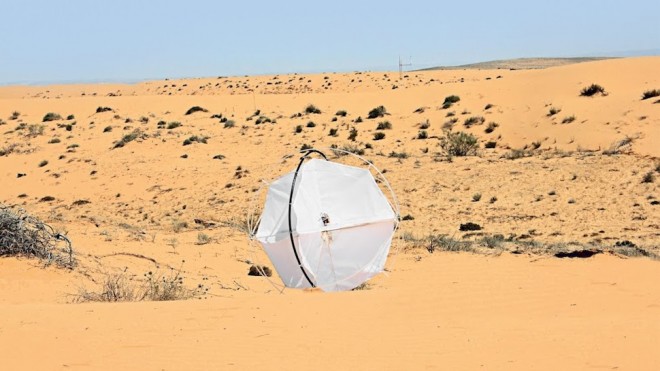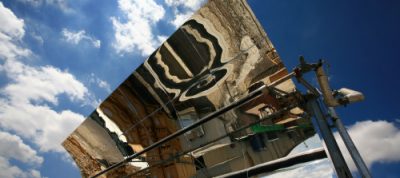 Desertification has gobbled up huge swaths of the Middle East and North Africa, a fact that Jerusalem-based industrial designer Shlomi Mir knows all too well. So he designed Tumbleweed Desert – a rolling robot capable of spending many solitary years in the desert gathering data aimed at slowing encroaching deserts.
Desertification has gobbled up huge swaths of the Middle East and North Africa, a fact that Jerusalem-based industrial designer Shlomi Mir knows all too well. So he designed Tumbleweed Desert – a rolling robot capable of spending many solitary years in the desert gathering data aimed at slowing encroaching deserts.
The Bezalel Academy of Arts and Design graduate originally thought he would pack a bunch of seeds into the core of his Tumbleweed ball, according to Wired. But desertification is not something that can be prevented with a few seeds dropped in random parts of the desert.
Instead, a range of factors contribute to desertification, including unsustainable agricultural practices, overgrazing, mining, global warming and subsequent climate change, overpopulation, and perhaps a few factors of which we are not yet aware.
In fact, gathering the data necessary for understanding desertification can be problematic, and it this is a shortfall that Mir hopes to bridge with his autonomous design that is capable of transforming itself according to the prevailing climatic conditions thanks to its tensioned steel frame.
(Related: Mohamed Kassas – Egypt’s prophet of desertification)
Wrapped in a box kite sail that picks up wind and propels it in random directions, the Tumbleweed is equipped with a kinetically-powered on board computer, motor and sensor that help to collect climate data, along with a GPS that maps its trajectory.
While it can’t move in a specific direction, it can move long distances at significant speed, picking up information useful to science such as wind conditions – basically information that would be either prohibitively expensive for people to obtain for themselves, difficult because of topographical obstacles, or just too time-consuming given such vast distances.
One particular application, Mir told Wired, might be to create a three dimensional map of a dune in order to better understand how the dune moves. With this information, scientists might be able to achieve the ultimate goal, which is to prevent the desert from swallowing up more arable or habitable land.
:: Shlomi Mir



